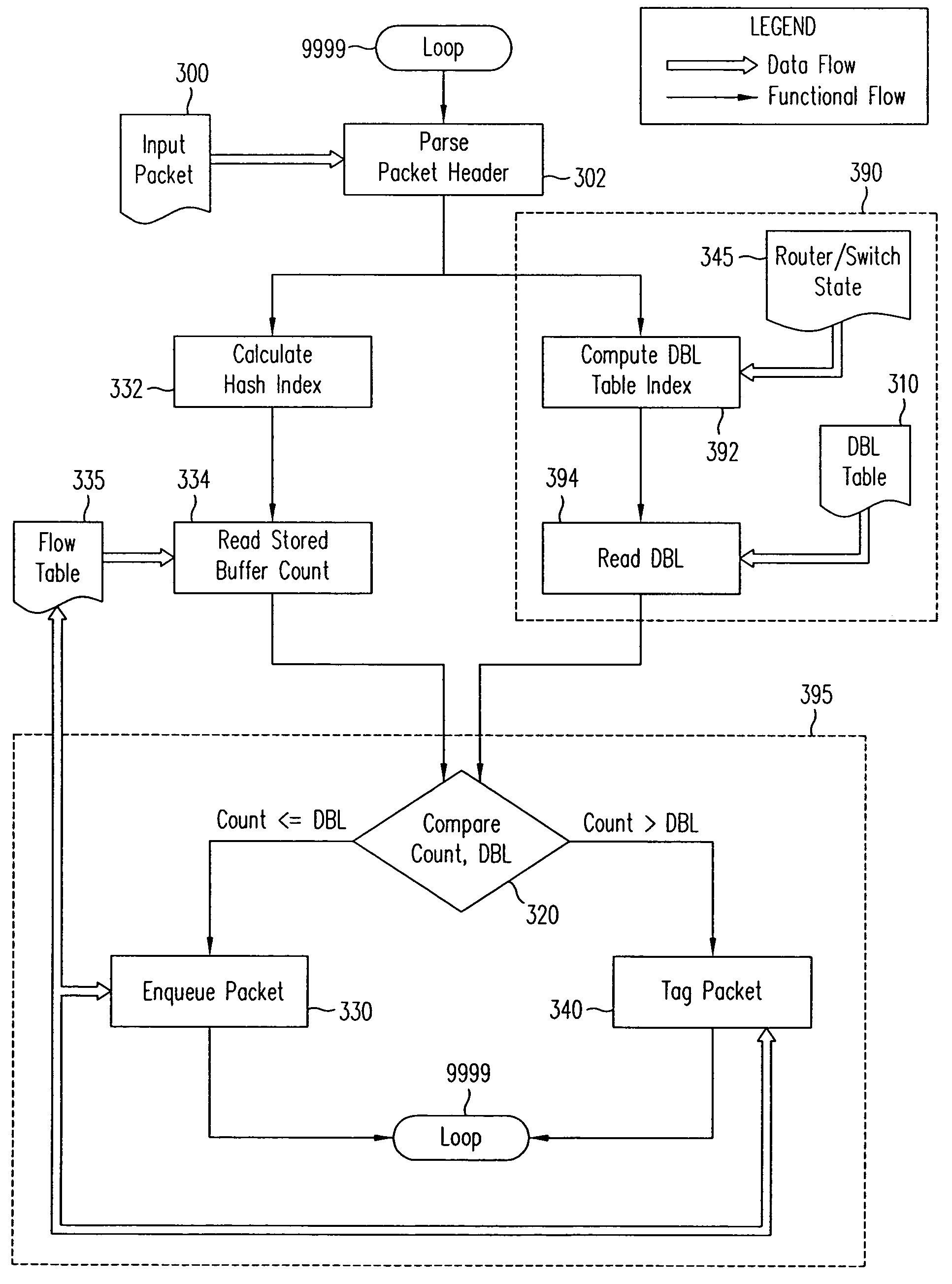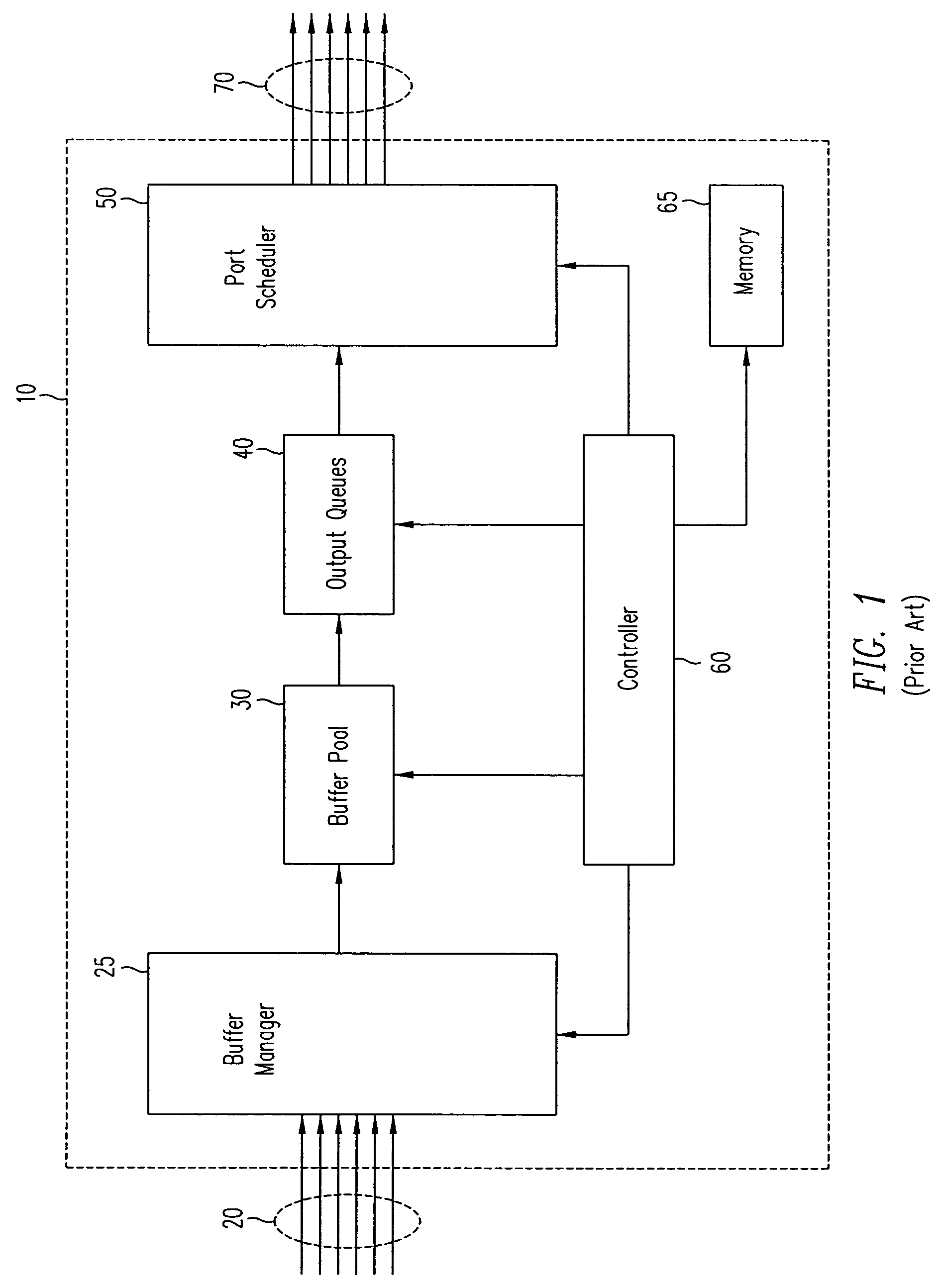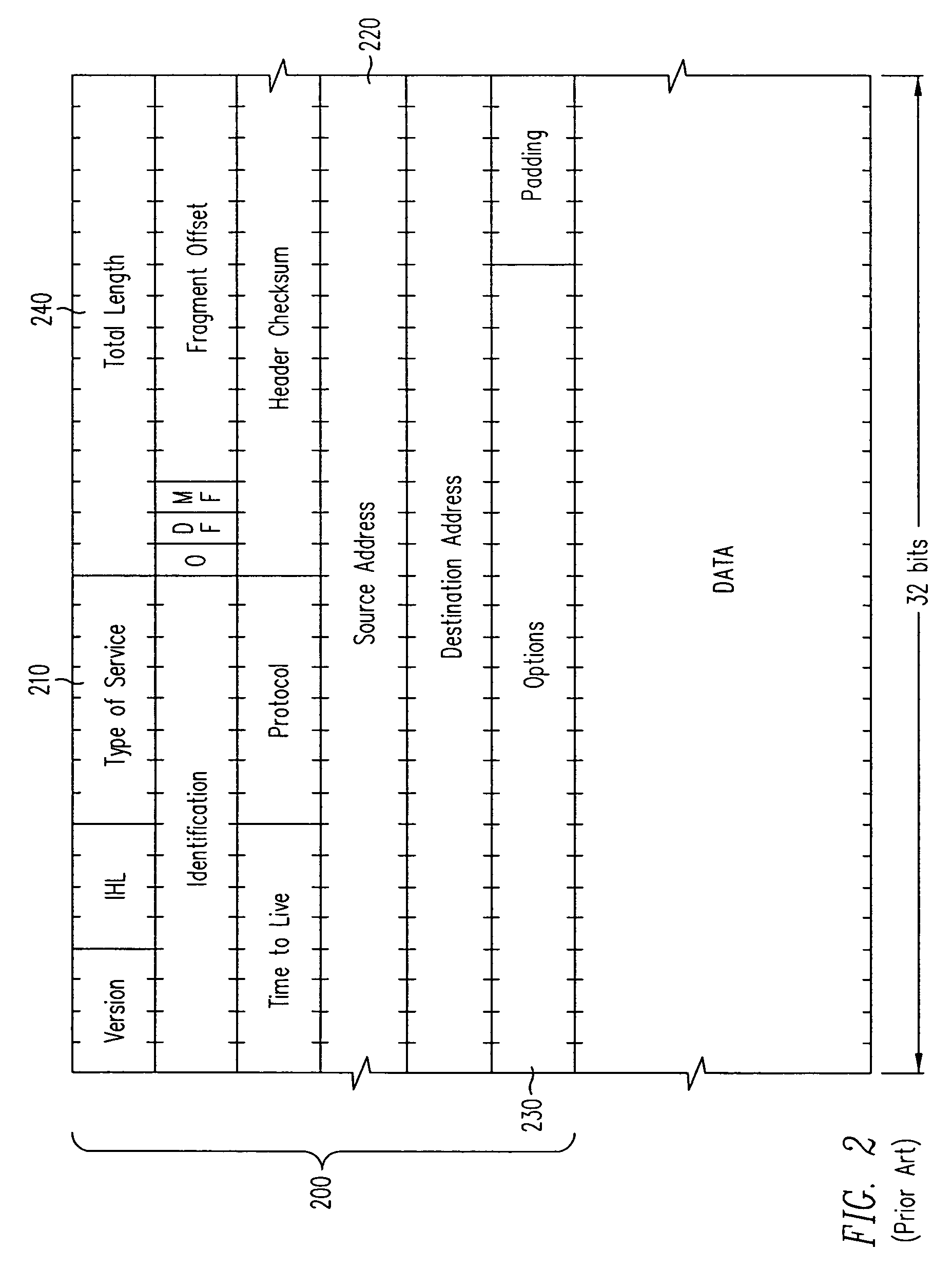Per-flow dynamic buffer management
a buffer management and per-flow technology, applied in the field of internetworking systems, can solve the problems of inefficient other flows, inability to handle well, drawbacks in cost, capacity and efficiency, and inefficiency when the number of flows increases
- Summary
- Abstract
- Description
- Claims
- Application Information
AI Technical Summary
Benefits of technology
Problems solved by technology
Method used
Image
Examples
embodiment
Hard and Soft Limiting Alternate Embodiment
[0081]A further alternative embodiment implements soft and hard dynamic buffer limits, referring to FIG. 9. Comparison 905 determine the subsequent steps. If the stored buffer count in the flow table entry exceeds a soft limit value and is less than a hard limit (greater than dblMin but less than DBL) 920, the packet is tagged 340 as above. However, it is then dropped or marked based on random selection, i.e., qualification step 610, FIG. 6, is based on a random selection of mark or drop. Such probabilistic drop computations are known in the art and commonly employed in RED-type schemes. If the stored buffer count exceeds the hard limit (DBL) 930, the incoming packet is dropped 650 and the credit field for the flow in flow table 335 is decremented. For simplicity, the soft limit may be set to a fraction of the hard limit so that only the hard limit is non-trivially computed or looked up. Of course, if count is less than or equal to the soft...
PUM
 Login to View More
Login to View More Abstract
Description
Claims
Application Information
 Login to View More
Login to View More - R&D
- Intellectual Property
- Life Sciences
- Materials
- Tech Scout
- Unparalleled Data Quality
- Higher Quality Content
- 60% Fewer Hallucinations
Browse by: Latest US Patents, China's latest patents, Technical Efficacy Thesaurus, Application Domain, Technology Topic, Popular Technical Reports.
© 2025 PatSnap. All rights reserved.Legal|Privacy policy|Modern Slavery Act Transparency Statement|Sitemap|About US| Contact US: help@patsnap.com



